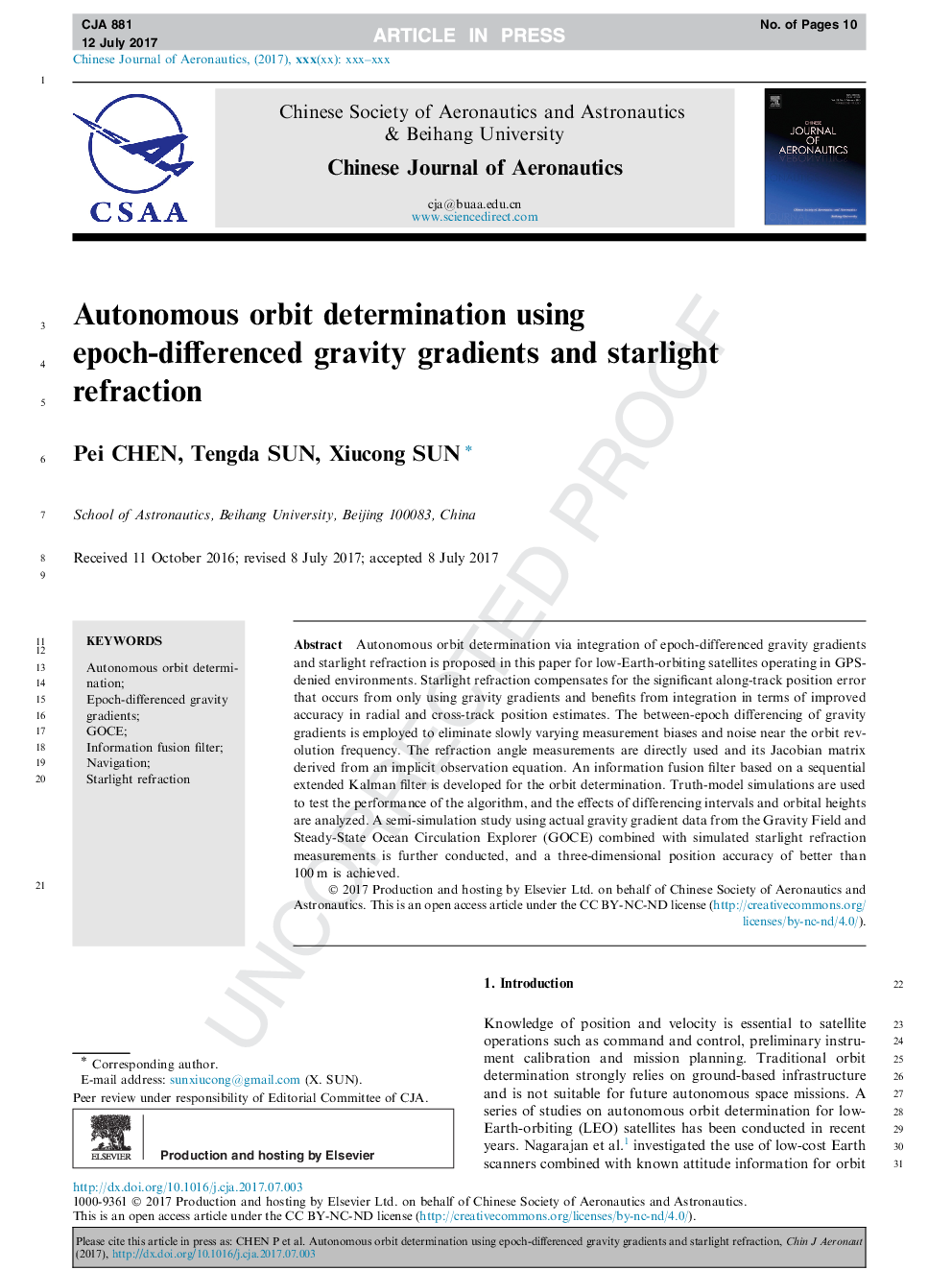| Article ID | Journal | Published Year | Pages | File Type |
|---|---|---|---|---|
| 7153903 | Chinese Journal of Aeronautics | 2017 | 10 Pages |
Abstract
Autonomous orbit determination via integration of epoch-differenced gravity gradients and starlight refraction is proposed in this paper for low-Earth-orbiting satellites operating in GPS-denied environments. Starlight refraction compensates for the significant along-track position error that occurs from only using gravity gradients and benefits from integration in terms of improved accuracy in radial and cross-track position estimates. The between-epoch differencing of gravity gradients is employed to eliminate slowly varying measurement biases and noise near the orbit revolution frequency. The refraction angle measurements are directly used and its Jacobian matrix derived from an implicit observation equation. An information fusion filter based on a sequential extended Kalman filter is developed for the orbit determination. Truth-model simulations are used to test the performance of the algorithm, and the effects of differencing intervals and orbital heights are analyzed. A semi-simulation study using actual gravity gradient data from the Gravity field and steady-state Ocean Circulation Explorer (GOCE) combined with simulated starlight refraction measurements is further conducted, and a three-dimensional position accuracy of better than 100Â m is achieved.
Keywords
Related Topics
Physical Sciences and Engineering
Engineering
Aerospace Engineering
Authors
Pei CHEN, Tengda SUN, Xiucong SUN,
